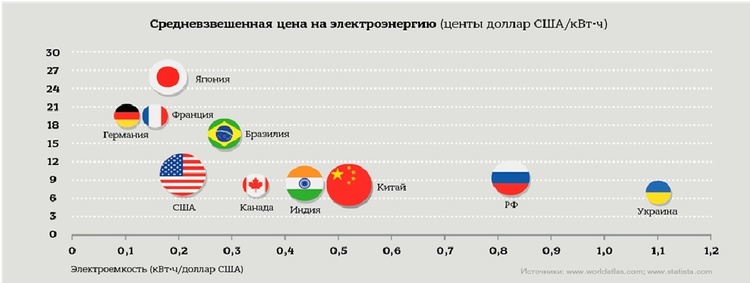Energy the European Way: How to Save in the Future by Investing Now
How much power might cost after the implementation of energy reforms in Ukraine

How much power might cost after the implementation of energy reforms in Ukraine
The reform of the power sector in Ukraine was launched by the Law on the Electricity Market, which took effect on June 11, 2017. The law is supposed to be fully functioning by July 2019. The outdated model of fixed tariffs is to be replaced by a free market where power will become a commodity, the number of market players will increase, and the central role will go to the consumer, who will be able to choose the supplier of this commodity. Danil Babkov, the manager of the Analytical Department of the Directorate for Commercial Activities of DTEK Energo, told Mind what changes and costs Ukrainian consumers should expect and what delayed effects there might be in an exclusive interview.
The current market model was introduced more than 20 years ago, and it is focused primarily on producers of electricity. This is at least because they are able to control their costs, unlike, for example, a metallurgical plant, which can't really have an impact on its electricity bill. The production cycle cannot be easily changed and the price of electricity is determined centrally, so the share of electricity in the cost of production remains unchanged. More and more frequently, it is too high for commercial activities to be profitable.
Ultimately, the new Law on the Electricity Market should provide an opportunity for each enterprise to regulate these costs.
The need to reform the market is most clearly demonstrated by comparing the share of power costs of domestic companies and companies from industrialized countries. Essentially, this chart shows the share of power costs in the country's total GDP.

We can see that the share of power in industrialized countries doesn't exceed 3-4%, while in the Ukrainian economy it comes to 6.3%. The main reasons are the high share of energy-intensive industries in the structure of Ukraine's GDP and insufficient levels of energy efficiency.
Experts believe that an open market, where electricity prices are not controlled and where a laissez-faire (non-intervention – Mind) approach is implemented, will restrain the growth of energy consumption, and that this figure will remain under 4%.
If this limit is exceeded, the consumer will engage in cost optimization. For example, some consumers will conduct energy audits, while others will disconnect from common grids and build their own power facilities or look for alternative suppliers. That is, consumers will be actively involved in solving energy efficiency issues.
A clear trend is visible in the chart below: the higher the energy intensity of the economy, the lower the tariffs, and vice versa. For example, China has low tariffs and high energy intensity. But by multiplying the tariff ($0.08) by energy intensity (0.5 kWh/$), we get a "weighted" share of power in China's economy equal to 4%.
If this indicative figure is exceeded, it may indicate government intervention in pricing and the setting of tariffs by regulatory means. However, there are interesting exceptions to this rule.

Back in 2012, the share of the power industry in China's GDP was 5.5%, which was the conscious decision of the authorities and was explained by the rapid development of the power sector associated with the commissioning of new generating facilities to ensure industrial growth. In addition, there was a large-scale environmental program, and numerous expensive wind and solar generation facilities were launched.
In Europe, one country that went above 4% was Germany. In 2002, the country launched the Energiewende (energy turnaround) program, which focused on the gradual abandonment of nuclear power and an almost complete transition to renewable sources. This German "turnaround" turned into a 64% increase in tariffs for consumers.
However, it is worth noting that the German authorities held public hearings for two years to tell market participants about all the possible consequences: tariffs, the impact on the power system, the economy of enterprises, and the environment. Consumers understood that they would have to pay billions of euros. They made this decision carefully and consciously because they agreed with the aspirations of the establishment. When consumers' position is strong, this approach is the only possible one during a temporary abandonment of market pricing.
In 2008-2010, the power sector accounted for slightly less than 5% of the country's gross income. But starting in 2011, the situation began to stabilize, and the share of the power sector decreased to 3-3.5%.
Based on the experience of European countries, we can confidently assert that the introduction of market mechanisms will help reduce total consumer payments from 6.3% to 4% of Ukraine's GDP. This will be made possible either through a reduction in energy consumption, mainly in the industrial sector (through the implementation of energy efficiency programs), or through power-generating enterprises' reduction of prices.
Sharp competition in the market will sooner or later force generating companies to abandon outdated facilities, implement modernization programs, increase productivity, and reduce operating costs. For example, today, about 80% of Ukrainian power grids are seriously worn out, and according to various estimates, the modernization of infrastructure alone will require $20-30 billion. Modernization and energy efficiency programs will give a powerful boost to the development of all Ukrainian industries.
For their part, household consumers will also have to learn to live in a free power market. Today, European energy companies are implementing modern services that facilitate communication with customers and help them save money. For example, they're introducing mobile applications (Internet services) for monitoring and managing energy consumption in real time, innovative solutions for determining tariffs, and services for the remote management of energy consumption in households. All these solutions are already available, and Ukrainians, too, can begin to implement them in their homes.
